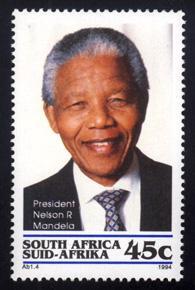
What can we learn about leadership communications from Mandela?
1. Create a strong message.
From the start, Mandela’s message was not only about ending the destructive system of apartheid in South Africa but about creating a just and free society for all South Africans. His message was big, bold and brave.
2. Be firm and consistent in your message as an expression of your values, beliefs, and goals.
Part of the Mandela’s strength was that he was unwavering in his fight against white domination and his hope for a society where all people live together in peace. So firm was he in his message that, as he said in the speech he gave at his 1964 trial where he was sentenced to nearly 30 years in prison, he was prepared to die for it. When we believe in what we are saying, we can be persuasive and influential. While most of us are not prepared to die for our company or nonprofit, to implement great leadership communications, we do have to feel aligned with and believe in what our enterprise or effort is doing every day.
3. Be honest and authentic.
Mandela had a clear sense of who he was and presented his true self to everyone, world leader or ordinary citizen. He had a unique style. He didn’t try to be what he wasn’t. He exhibited his own persona and never tried to adopt someone else’s style, a style which might work for someone else, but won’t necessarily work for you. Understand and be who you are.
4. Smile and communicate through body language.
Perhaps one of Mandela’s most endearing qualities was his big, broad, kind smile that lit up the room and communicated acceptance and a warm embrace. Mandela also carried himself with grace, standing tall, looking people in the eye, and speaking with a firm but humble voice, all of which communicated dignity and respect not only for how he treated others but how he expected to be treated by others, even those who would oppress him. Words send part of your message. Your voice tone, stance, facial expressions communicate the rest.
5. Use simple, yet expressive language.
Some of Mandela’s most powerful quotes used humble words that could be understood by most everyone, painting indelible pictures in the mind of the listener or reader. Consider these examples:
“I learned that courage was not the absence of fear, but the triumph over it. The brave man is not he who does not feel afraid, but he who conquers that fear.” Or this: “Difficulties break some men but make others. No axe is sharp enough to cut the soul of a sinner who keeps on trying, one armed with the hope that he will rise even in the end.”
The world has lost a remarkable human being and leader who showed that the power of an idea well communicated could truly awaken, inspire, and change the world.

